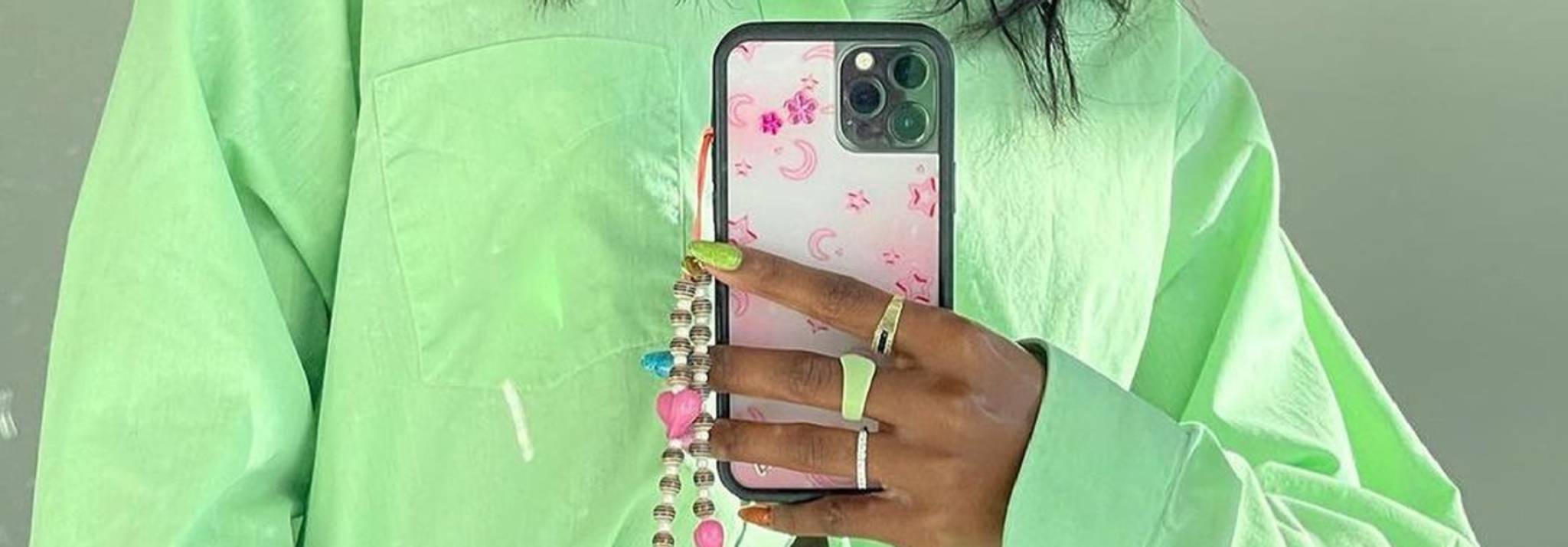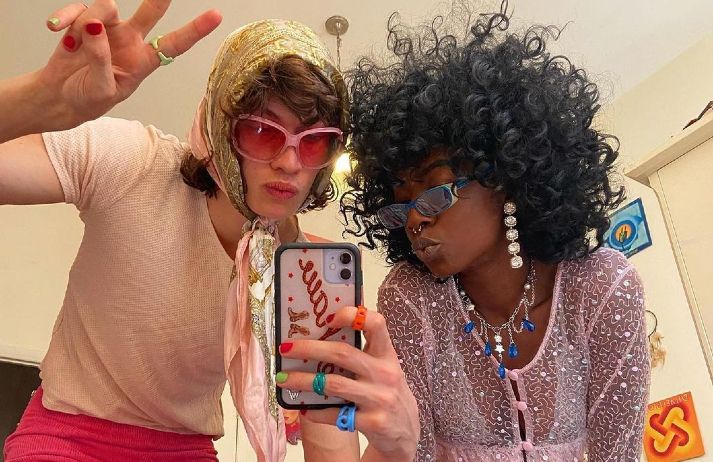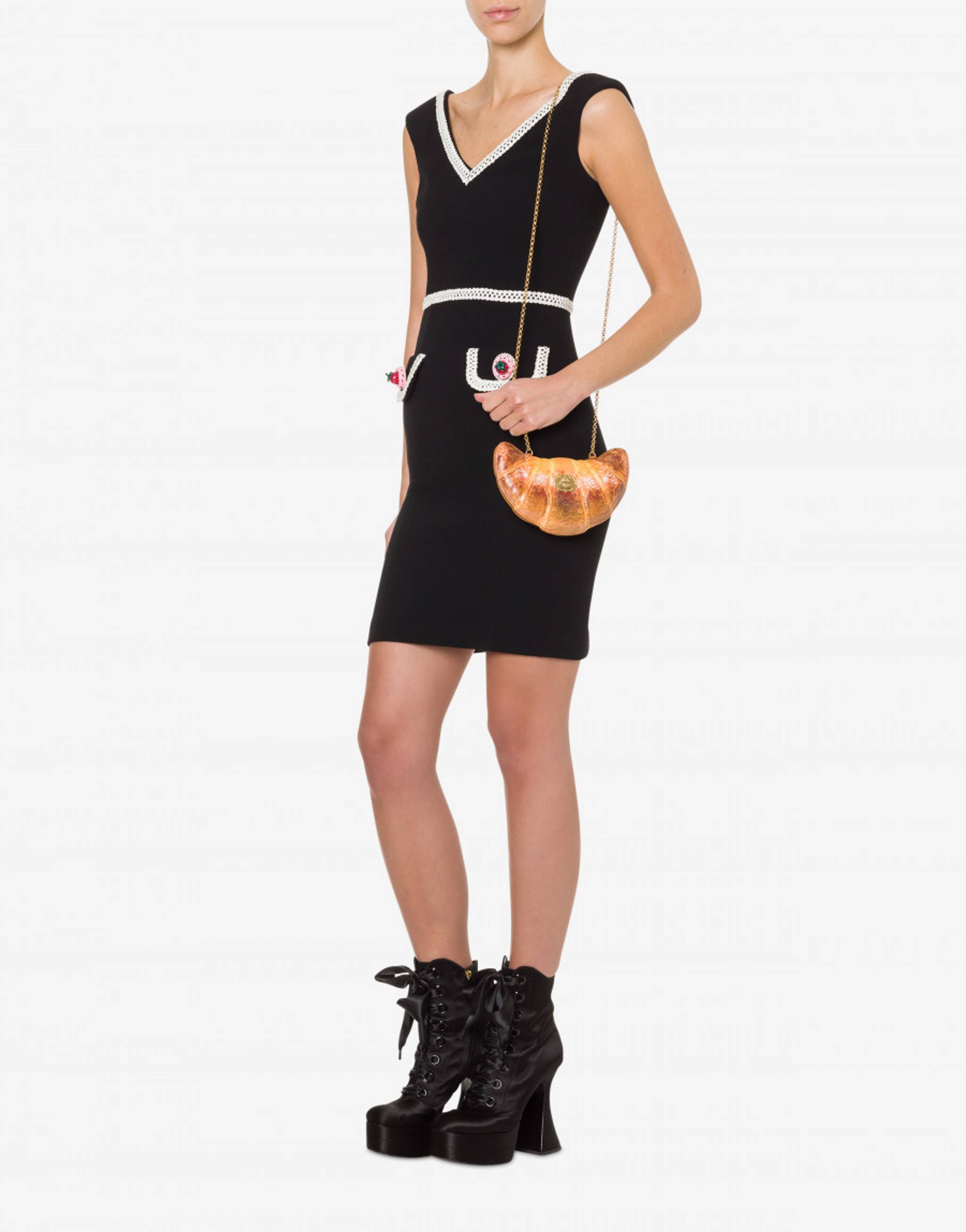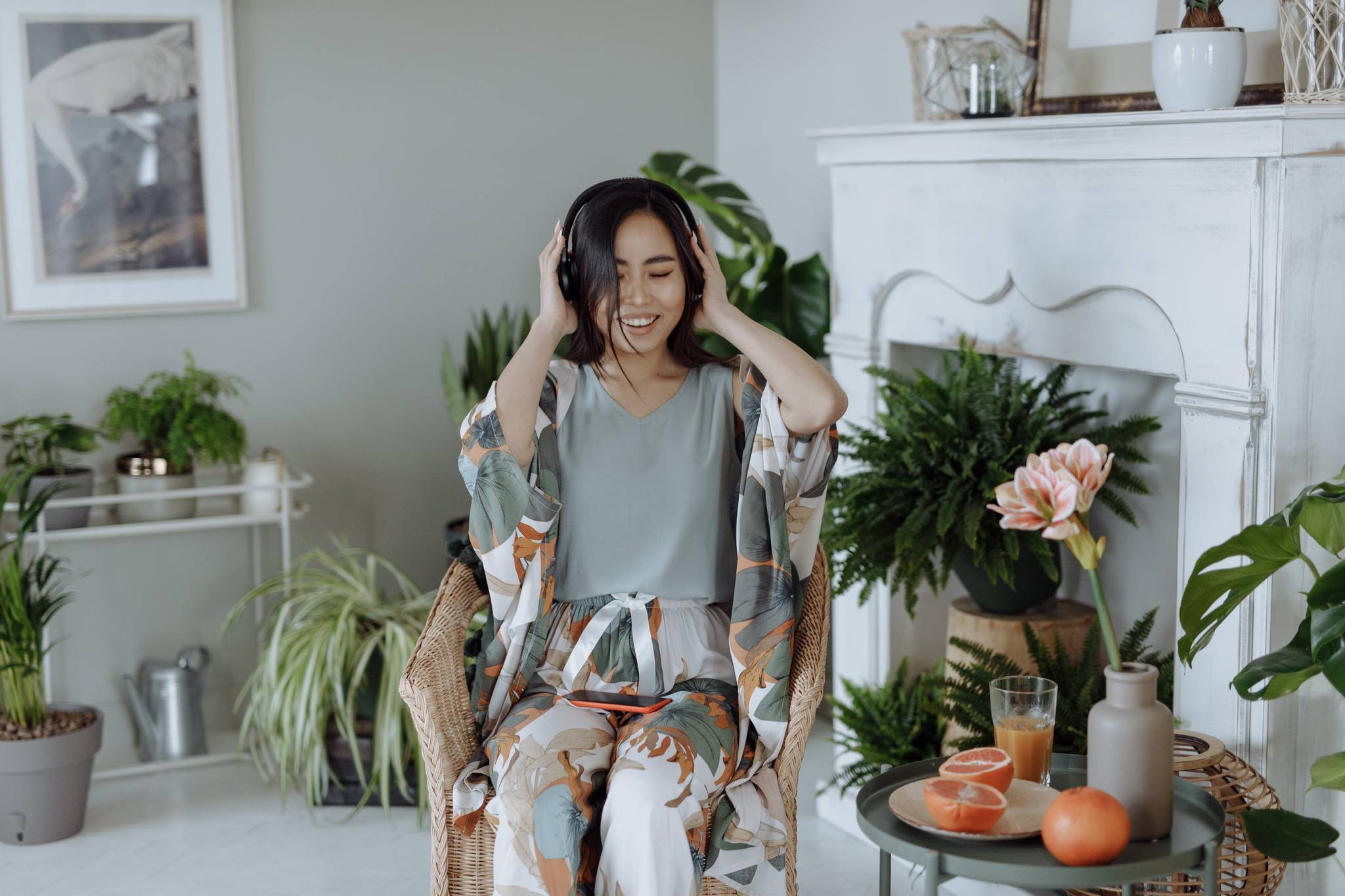
Opportunities for sartorial expression have been few and far between during the pandemic – except on social media. In this context, phone cases are becoming a lower-priced, fun way to show off identity. Given phones’ ubiquity, cases are an easy way for brands to show up in people’s lives. We explore the insights behind this and why people are treating themselves to little luxuries.
Iconic phone cases have become the must-have accessory of the mirror selfie, with celebrities including Miley Cyrus, Dua Lipa, and Gen Zer-favourite model Salem Mitchell, all joining in with the whimsical display of tech protection. Elevating this functional item to a fashion piece, Wildflower Cases offers limited-edition designs in a mix of psychedelic florals, geometric patterns, and bold cartoon characters, signalling a shift whereby the humble phone case is standing in for the It-bag. Other popular brands have opted to use phone cases to share a message; sibling-founded Urban Sophistication, for instance, sells a case bearing the warning 'Social media seriously harms your mental health'.

In the pandemic climate, people have been turning to little luxuries in line with the so-called lipstick effect, investing in less expensive treats while the economy remains unstable. Smaller purchases like luxe phone cases can be viewed as a permissible indulgence, bucking Gen Zers’ eco-minded preference for second-hand retail. Globally, 40% of Gen Zer women had shopped second-hand during 2019, compared to 30% of Gen Yer and 20% of both Gen Xer and Boomer women. The popularity of coveted phone cases taps into this shift toward small luxuries, while also helping people to express their style identity and create moments of joy through fashion. While uncertainty remains, people could be looking for brands to offer up more lower-stakes purchases that still help them experience a touch of retail therapy.
Ellie Barber is a senior behavioural analyst at Canvas8. She has worked across the UK, US, Europe, and Asia to unpick consumer behaviour for some of the world’s largest brands, finding herself on rooftops with Russian teenagers and eating hot pot with Shanghai’s streetwear community. When she’s not doing that, you can find her singing at weekly choir practises or attempting Ottolenghi recipes.



